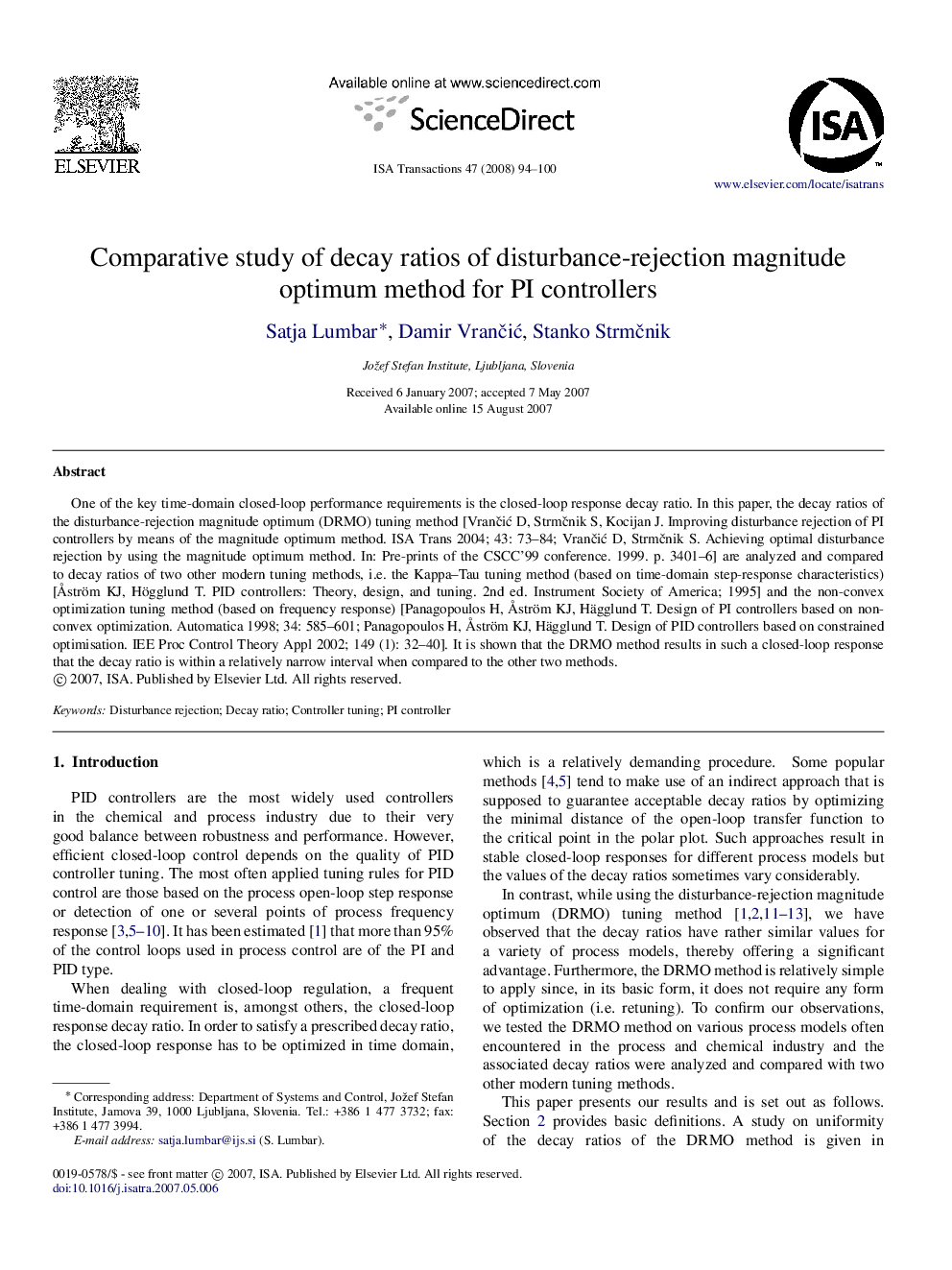| کد مقاله | کد نشریه | سال انتشار | مقاله انگلیسی | نسخه تمام متن |
|---|---|---|---|---|
| 5005240 | 1369016 | 2008 | 7 صفحه PDF | دانلود رایگان |

One of the key time-domain closed-loop performance requirements is the closed-loop response decay ratio. In this paper, the decay ratios of the disturbance-rejection magnitude optimum (DRMO) tuning method [VranÄiÄ D, StrmÄnik S, Kocijan J. Improving disturbance rejection of PI controllers by means of the magnitude optimum method. ISA Trans 2004; 43: 73-84; VranÄiÄ D, StrmÄnik S. Achieving optimal disturbance rejection by using the magnitude optimum method. In: Pre-prints of the CSCC'99 conference. 1999. p. 3401-6] are analyzed and compared to decay ratios of two other modern tuning methods, i.e. the Kappa-Tau tuning method (based on time-domain step-response characteristics) [à ström KJ, Högglund T. PID controllers: Theory, design, and tuning. 2nd ed. Instrument Society of America; 1995] and the non-convex optimization tuning method (based on frequency response) [Panagopoulos H, à ström KJ, Hägglund T. Design of PI controllers based on non-convex optimization. Automatica 1998; 34: 585-601; Panagopoulos H, à ström KJ, Hägglund T. Design of PID controllers based on constrained optimisation. IEE Proc Control Theory Appl 2002; 149 (1): 32-40]. It is shown that the DRMO method results in such a closed-loop response that the decay ratio is within a relatively narrow interval when compared to the other two methods.
Journal: ISA Transactions - Volume 47, Issue 1, January 2008, Pages 94-100